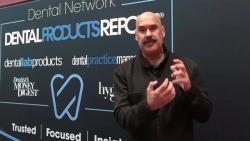- About Us
- Advertise
- Editorial
- Contact Us
- Terms and Conditions
- Privacy Policy
- Do Not Sell My Personal Information
© 2025 MJH Life Sciences™ and Dental Products Report. All rights reserved.
Watching It: Do All Caries Need Treatment?
Sometimes it’s clear what to do with a carious lesion. Sometimes it isn’t. We talked to 3 experienced dentists to explore the decision process for treating caries or watching it and what you should consider in a given situation.
Consider the following scenario, international speaker and mentor Ankur Gupta, DDS, says. An explorer sticks a little in a lingual groove of a maxillary molar with a bit of brown staining. Should the clinician fill it right away or watch it?
Dr Gupta says posing this question to 15 clinicians would result in 5 dentists who fill it, 5 who watch it, and 5 who would be less decisive. Moreover, all 15 treatment plans are well within clinical parameters.
Jason Goodchild, DMD, vice president of clinical affairs for Premier Dental Products Company, agrees that inter-clinician judgment calls can be a sticky issue. The decision comes down to the clinician’s tolerance and experience and depends heavily on patient factors such as caries risk, routine vs crisis care, type of patient, medical history, dental history, finances, and patient preferences.
“Some carious lesions are obvious and there is no judgment call; others can be small or hard to confirm, or on young, old, or complex patients. This is where judgment calls creep in,” Dr Goodchild says.
Tim Quirt, DDS, senior vice president of clinical operations at Heartland Dental, rarely encourages clinicians to watch things. He compares a carious lesion to a crack in your car’s windshield that starts small one night and by morning, it’s halfway across the surface. Dr Quirt says things like caries in dentistry typically follow the same pattern when ignored.
“You don’t necessarily want to watch things get worse,” Dr Quirt says.
However, Dr Quirt thinks patient-specific situations might dictate taking one’s time to treat a carious lesion. For example, small children who might lose the affected tooth soon might not need it filled immediately. Also, geriatric patients with complex medical histories could require some time before treatment. Additionally, Dr Quirt says healthy patients without a history of decay might have a shadow on the x-ray that a clinician decides to watch before treating it. Understanding the patient’s medical history and how consistently they come in for checkups can help the clinician make these judgment calls.
“One of the big issues can be [adherence]. You don’t want to watch too many things if a patient barely comes in every 5 or 10 years,” Dr Quirt says. “All of those things combine to give you a clue if something needs to be done immediately or you can keep an eye on it. But again, if it’s decay or infection, you want to get after it as fast as possible because it rarely gets better.”
Dr Goodchild may also watch it based on factors such as age, ability to cooperate, behavior, size of the lesion, and how close the tooth is to exfoliation.
“I am always trying to give kids positive experiences so they become lifelong great dental patients. A bad experience can be detrimental to them going forward,” Dr Goodchild explains. “If the caries is small or medium and radiographically it looks like the tooth will fall out soon, I’d most likely just keep an eye on it. Also, if the child is very young and I’m worried about the behavior, I may try to hold off a little while trying to create some rapport and allay their anxiety by having a few routine and easy visits."
Dr Goodchild may also decide to watch it when the patient is older and the patient’s medical history or other factors may compromise his ability to treat them safely.
“Typically, strategies can be developed to treat these patients, but I have certainly had elderly and frail patients where putting them through extensive dental work was not something they or their families wanted,” Dr Goodchild says.
For example, Dr Goodchild saw an older man recently who was otherwise healthy but, because of dementia, was not able to care for himself well and could not practice good oral hygiene. He had several small carious lesions, some in hard-to-access areas, possibly necessitating crowns or even eventual extractions.
“Based on his level of expected oral hygiene, he wouldn’t be able to maintain the restorations,” Dr Goodchild says. “Our plan after consulting with the caregiver was to see him regularly for hygiene and monitoring and address any areas that become symptomatic.”
Dr Goodchild has also had plenty of patients who, after hearing they have caries, say nothing is hurting and they don’t want to do anything about it.
“The best you can do is inform about risks of no treatment and then fully document,” Dr Goodchild says. “That is true in all cases.…Document.”
What to Watch Out for With the Watching It Approach
When it comes to treating it or watching it, there are pros and cons to each approach. Dr Gupta says drilling pulverizes the enamel while waiting could mean more decay and a more severe lesion in a few months.
Therefore, in his private practice in Ohio, he prefers to take a third option when he decides to watch it: arresting the decay. He treats the lesion with medicine that keeps decay from progressing, or at least delays it, and see what happens.
“Very few dentists even entertain that possibility either because of a lack of knowledge or confidence that it will work,” Dr Gupta says. “But in my opinion, that’s the absolute best option when you watch it.”
A few products can help with this approach. Silver diamine fluoride (SDF), which is FDA-cleared as a desensitizing agent, has an off-label use to arrest caries. However, Dr Gupta thinks clinicians often have a misconception that this product turns the tooth black, which makes them hesitant to use it.
However, SDF turns only caries black. While many patients don’t want black lesions on their anterior teeth, in Dr Gupta’s experience, most don’t care about that in the posterior.
“It’s rare for a patient to be uncomfortable with that possibility,” Dr Gupta says.
Dr Gupta also likes a product by Young Specialties, Curodont™ Repair Fluoride Plus, labeled as guided enamel regeneration for treating early carious lesions. He charges $25 to $30 for the application and then watches the area to see if it worsens over time. Few patients decline the treatment, he says, making it an excellent middle ground between drilling unnecessarily and doing nothing.
Diagnostic artificial intelligence (AI) can also give clinicians more time to treat a patient’s case, which Dr Quirt says Heartland Dental is piloting in some of its supported practices today. The technology identifies areas of concern in the radiographs for clinicians to take a closer look at for diagnosis. Using these indicators from the AI, dental clinicians can detect the start of decay earlier, which might mean they don’t treat it right away. However, Dr Quirt would also encourage using an adjunctive aid on top of that.
“Suggestions to the patient could be an increase in fluoride, or using fluoride trays or higher-fluoride toothpaste. Or some new treatments can arrest or even heal some of these decayed areas,” Dr Quirt says.
Dr Goodchild says clinicians should document everything when watching instead of treating. The record should explain that the dentist diagnosed it and informed the patient of the treatment needed and the risks of not doing so. He would also supplement the documentation with images.
“I would take intraoral photos when possible and have good radiographs. Leave no question about a potential failure to diagnose,” Dr Goodchild says.
What Should Clinicians Do When They Decide to Watch It?
When making the judgment call, Dr Goodchild would say it’s a fine line. However, deciding to watch and monitor caries should be based on each clinical situation.
“Are you an aggressive dentist or a conservative one? Somewhere in the middle? I’m hesitant to start filling cavities on teenagers unless the caries are obvious. I know that I’m setting that tooth up for a cycle of placement and replacement which eventually will culminate with more extensive restorations,” Dr Goodchild says. “Can we address preventive strategies to help mitigate at-risk areas and at-risk patients to put off starting the placement and replacement cycle?”
Dr Quirt says the patient relationship plays a significant role in the decision to watch it. Communication, transparency, and setting expectations are critical. Regular checkups and x-rays are also vital when employing a watching-it strategy. Dr Quirt says if those things aren’t there, clinicians might need to be more assertive about treating it. Clinicians who decide to watch something combined with an apathetic patient are a dangerous mix in dentistry.
When in doubt whether to watch it, Dr Quirt recommends taking the same approach with the patient as you would with a friend or family member. Not only will this help drive clinical decisions, but it will also grow the practice.
“Patients can feel and sense when you are treating them as if you are a part of the family. So talk to them and treat them that way, and you will undoubtedly be able to decide what’s best for that patient,” Dr Quirt says.
Dr Gupta says it is important to realize that few things in life offer binary choices. When deciding what to do, having a third option makes judgment calls more comfortable.
“Life would be so much easier if everything was black and white. Just imagine if you could look at a tooth that either has a cavity or doesn’t, or you look at a radiograph and it’s either something bad that needs to be fixed or something perfectly fine you can watch. It’d be so nice if everything was black and white, but everything in life is this long, annoying gradient of gray between the black and the white,” Dr Gupta says. “All of us must realize that our experiences, upbringing, and education make different decisions on that gradient. There’s never a perfect answer that every dentist will agree upon.
“That’s why having a middle-ground solution is so important,” Dr Gupta continues. “When we have binary solutions, either we watch it or fill it then we reduce the person’s dental situation to black and white. And the reality is there isn’t black and white, just a big, old, long, annoying gradient in shades of gray. By opening our minds to a middle ground, we are at least putting something in the middle of that gradient, allowing us to be more responsible in our decision-making."



